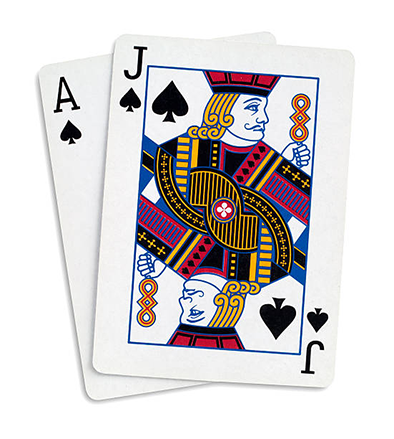Blackjack Game
Play blackjack to reach 21 and beat the deck of cards!
Blackjack, commonly known as twenty-one, is a widely loved card game played in homes and casinos across the globe. The goal of the game is to outscore the dealer without surpassing a total of 21.
Blackjack is a beloved card game with a global following. Originating centuries ago, it has remained a favorite pastime, captivating players of all generations. The objective is to achieve a hand value as close to 21 as possible, without going over. Players face the exciting choice of taking additional cards ("hits") or sticking with their current hand. The game's elegant simplicity, intertwined with strategic decision-making and an element of luck, guarantees a thrilling experience. Whether you're a beginner or a seasoned player, blackjack's universal appeal and timeless excitement never fail to enthrall.

One game that never fails to surprise me with its universal appeal is blackjack. Regardless of where you go in the world, the rules and gameplay remain the same, making it one of my all-time favorite card games.
Believed to have originated in the Spanish regions, it's incredible to see how far this 17th-century game has spread, captivating players in countries worldwide.
What I find most captivating about blackjack is its perfect blend of strategy and simplicity. While it requires thoughtful decision-making, understanding the game is remarkably straightforward.
The primary objective is to achieve a hand total as close to 21 points as possible, or ideally, hit the magical number itself. However, crossing the 21-point threshold results in an instant loss, so careful judgment is crucial.
To build your hand, you can choose to take a "hit" (receive an additional card) or "stick" (refrain from receiving more cards) based on your hand's proximity to 21 and your risk tolerance. Remember, going even a single point over 21 puts you out of the game.
In traditional blackjack, verbal communication is often minimal. Instead, players rely on specific hand gestures or table taps to indicate their desire for a hit. This non-verbal aspect adds to the game's charm and simplicity.
While luck plays a significant role in blackjack, the game manages to keep players on the edge of their seats, providing an exciting and enjoyable experience.
Whether you're a seasoned player or new to the game, blackjack's universal appeal and blend of strategy and chance make it an enduring favorite among card game enthusiasts worldwide.
Here's a basic overview of how the game is played:
Card Values: In blackjack, each card has a specific value. Numbered cards (2-10) are worth their face value, face cards (Jack, Queen, King) are worth 10, and the Ace can be worth either 1 or 11, depending on which value benefits the player more.
The Setup: The game is typically played with one or more standard 52-card decks. The cards are shuffled before each round. Players place their bets before the cards are dealt.
Dealing the Cards: The dealer distributes two cards to each player, including themselves. Both player cards are usually dealt face up, while the dealer has one card face up and one face down.
Playing the Hand: Starting from the left, each player takes turns deciding whether to "hit" (receive another card) or "stand" (not receive any more cards). The goal is to get as close to 21 as possible without going over.
The Dealer's Turn: Once all players have completed their turns, the dealer reveals their face-down card. If the dealer's hand totals 16 or less, they must draw another card ("hit"). If the total is 17 or more, the dealer must stand. The dealer continues drawing cards until their hand totals 17 or more.
Comparing Hands:After the dealer has finished drawing cards, the hands are compared. If the player's total is closer to 21 than the dealer's or the dealer busts (goes over 21), the player wins. If the dealer's hand is closer to 21 or the player busts, the player loses. If both the player and the dealer have the same total, it's a tie or "push," and the player keeps their bet.
Blackjack:If a player is dealt an Ace and a card with a value of 10 (10, Jack, Queen, King) on the initial deal, they have a "blackjack." This is the highest-ranking hand and usually pays out at a higher rate, such as 3 to 2. If the dealer also has a blackjack, it's a tie.
These are the basic rules of blackjack, but there are additional options and variations that can be found in different versions of the game. It's always a good idea to familiarize yourself with the specific rules being used before playing in a casino or with other players.